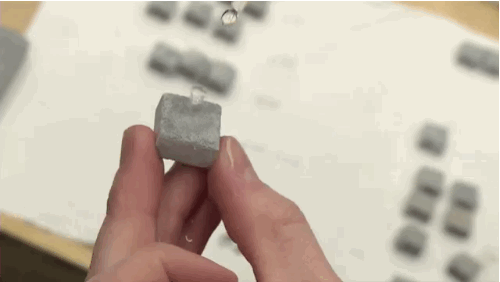Register here to attend in person or via webcast.
Wednesday, April 30, 2014
from 12:30 p.m. to 2:00 p.m. EDT
The axiom 'If
You Can't Measure It, You Can't Manage It' is destined to become
increasingly relevant as organizations and individuals want to know more about
the costs, attributes and effects of the energy they consume.
Numerous reference points for the intersection of energy and IT
industries exist and are increasing. Examples include:
Nest learning thermostats, ‘smart’ meters on buildings, near real-time energy
monitoring, and embedded sensors and networked devices for command, control and
monitoring.
Underneath these emerging applications basic questions exist about value and
impact of the data and information. Does actionable information change
corporate decision-making or individual behavior? How? What ROI’s
are achievable?
Plan to join this timely discussion on the increasingly important role of
information and energy.
Peter C. Evans, Vice President, Center for Global Enterprise
As Vice President at the Center for Global Enterprise (CGE), Peter is
responsible for the Center’s research agenda, global academic partnerships and
CEO Exchanges.
Previously, Peter held key strategy and market intelligence roles at General
Electric. He was Director of GE Corporate's Global Strategy and Analytics
team. He also led GE Energy's Global Strategy and Planning team for five
years, where he oversaw the Fuels, Policy, Carbon and Strategic Workforce
Planning Centers of Excellence. Prior to joining GE, he was Director,
Global Oil, and Research Director of the Global Energy Forum at Cambridge
Energy Research Associates (CERA).
His many articles and policy monographs include: The Age of Gas and the Power of Networks (General
Electric 2013); The
Industrial Internet: Pushing the Boundaries of Minds and Machines
(General Electric, 2012) Japan:
Bracing for an Uncertain Energy Future (Brookings Institution,
2006), Liberalizing Global
Trade in Energy Services (AEI Press, 2002).
Peter holds a BA from Hampshire College and a master degree and PhD from the
Massachusetts Institute of Technology.
Sameer Vittal, Manager – Advanced
Analytics, Power Generation Services, GE Power & Water
Sameer is the Engineering Manager for Advanced Analytics at the Power
Generation Services division of GE Power & Water. He has been with GE since
2000 and leads a global team of data scientists responsible for developing
data-analytics based technologies to monitor and optimize the performance, risk
and health of gas turbine power plants. In addition to gas turbines, he has
extensive experience in developing analytics solutions for renewable energy,
primarily wind turbines.
Sameer has more than 17 years
of experience in analytics, predictive modeling, optimization, reliability
engineering, condition monitoring and risk management in the automotive and
energy industries. He is a frequent speaker at industry conferences with an
interest in actuarial engineering – an emerging risk management field that
integrates techniques from engineering, operations research and actuarial
science.
Sameer has a BE in mechanical engineering
from Bangalore University as well as MS and PhD degrees in mechanical
engineering from Rensselaer Polytechnic Institute.
John Bracey, President, Skye Energy
Skye Energy allows commercial building owners to transform scattered building
data into clear efficiency projects and ongoing tracking of performance.
Leveraging a cloud based energy analysis platform, a building’s details can be
analyzed by marketplace experts to find, build, and implement projects,
bringing significantly lower effort and costs, better ideas, and higher volume
of sales to the efficiency market.
Prior to founding Skye Energy, John spent over 10 years conducting technical
energy analysis on commercial buildings, training architects and engineers on
how to build better buildings. He has spoken at numerous industry
conferences on best practices.
John holds a BS in mechanical engineering from Georgia Institute of Technology.
Participants can attend for free in person at the Centergy
Building on Georgia Tech's campus or via Webinar.
For more information and to register for this program, visit www.secleanenergy.gatech.edu





































